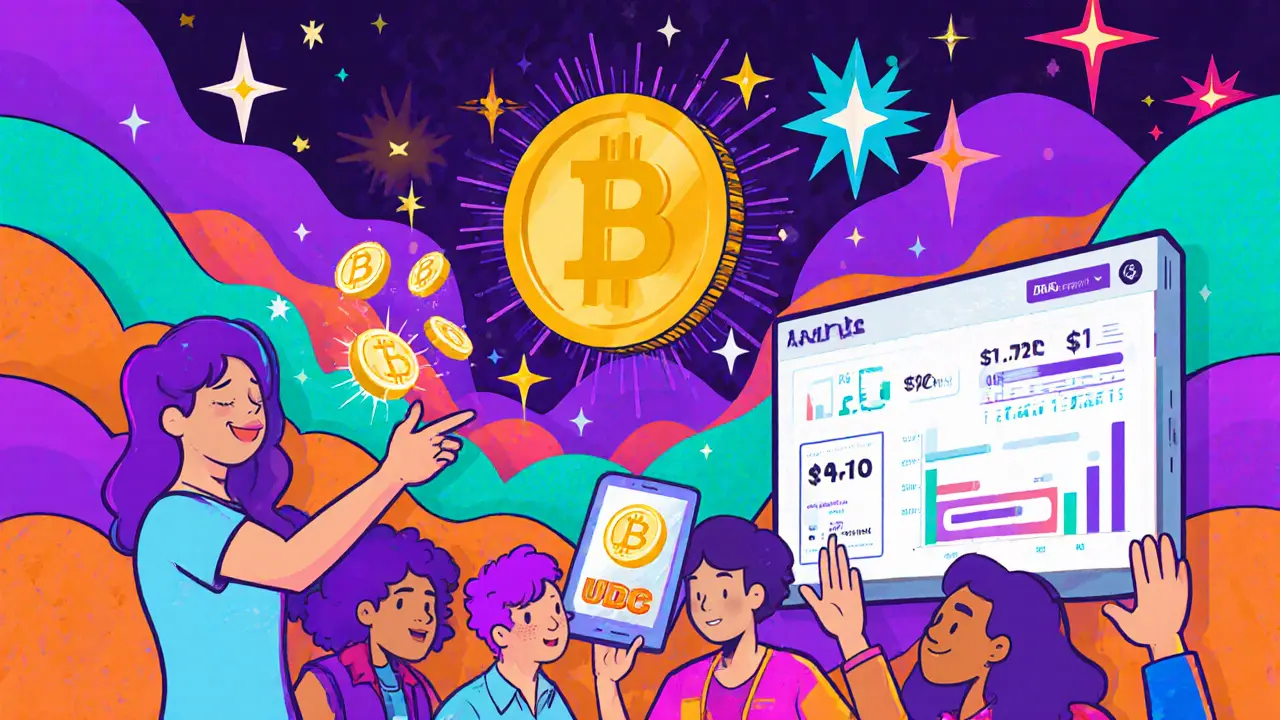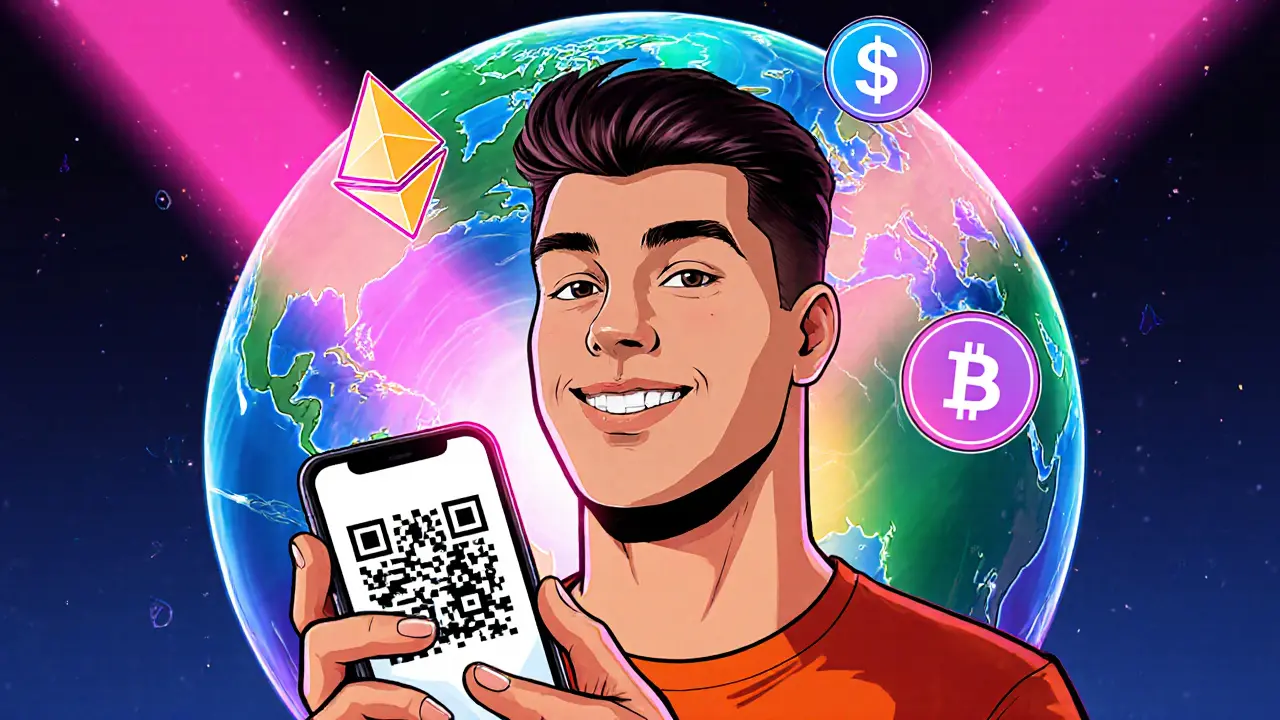Creator Revenue Calculator
Calculate Your Savings
See how much you could save by switching to crypto payments
Results
Enter your monthly earnings to see your potential savings
Creators are always hunting for ways to earn more, keep more, and stay in control of their work. Cryptocurrency is reshaping that hunt by handing creators a direct, border‑free money lane and a new ownership model for digital assets. In the next few minutes you’ll see why crypto matters, how it works in practice, and what steps you can take to start cashing in.
Why the creator economy needs a money upgrade
By 2025 the global creator economy is already a Creator economy a $250 billion ecosystem where individuals monetize content on platforms such as YouTube, Instagram, Twitch, and emerging blockchain‑based services. Traditional platforms charge steep fees, hold the audience data, and often stall cross‑border payouts for days. For a Nairobi‑based video maker who lands a sponsorship from a French brand, the money can sit in a limbo for up to a week while banks double‑check compliance. That lag eats into cash flow and discourages creators from pursuing international deals.
What crypto brings to the table
At its core, crypto gives creators three tangible benefits:
- Financial sovereignty: Payments go straight to a wallet you control, not a platform that can change its terms overnight.
- Instant global settlement: Transactions settle in seconds on networks like Solana or Ethereum, bypassing the 3‑5‑day banking cycle.
- New monetization formats: Tokenized fans, NFTs, and creator‑issued stablecoins turn loyalty into tradable assets.
These advantages are especially evident in emerging markets. A 2025 BairesDev survey showed that 60% of creators in Nigeria now rely on crypto because local banks either block the flow or charge exorbitant conversion fees.
How creators actually use crypto today
Here’s a quick snapshot of the most common use‑cases, drawn from the latest industry data:
- Direct payments via crypto wallets - Creators share a QR code or wallet address on their bio; fans send ETH, USDC, or SOL directly.
- Tokenized communities - Platforms like Zora let creators mint a unique token that fans buy to unlock exclusive content.
- NFT drops - Artists sell limited‑edition digital art or music as non‑fungible tokens on marketplaces such as OpenSea.
- Stablecoin payouts - To avoid volatility, many creators convert incoming crypto into USDC or USDT immediately, a practice built into tools like Zora’s auto‑convert feature.
- Hybrid revenue splits - Some creators blend Patreon‑style subscriptions with crypto tips, keeping a larger share of the pie.
The average creator spends 8‑12 hours learning the basics, according to BairesDev’s 2025 creator survey. That time covers wallet setup, connecting a payment processor such as Coinbase Commerce, and adding a simple "Pay with Crypto" button to a website or merch store.
Tech stack you need to get started
Below is a pragmatic checklist that works for most solo creators. You don’t need a developer; just a smartphone and a few minutes each week.
- Non‑custodial wallet - MetaMask (63% market share among creators) or Coinbase Wallet. Install the app, write down the seed phrase offline.
- Payment processor - Sign up for Coinbase Commerce (24/7 chat support, average response 8 minutes) or Zora’s creator‑payment API.
- Stablecoin bridge - Enable auto‑conversion to USDC within the processor to lock in value instantly.
- Integration point - Add the processor’s widget to your Wix, Shopify, or WordPress site. Zora’s August 2025 Shopify plug‑in makes this a three‑click job.
- Tax & compliance - Use a service like Koinly or CryptoTax to generate reports; keep track of wallet addresses for each transaction.
Most of these tools run on iOS and Android, meaning a creator in Jakarta can start earning crypto on the same day they finish a vlog.
Cost comparison: Traditional vs Crypto payments
| Metric | Bank / PayPal / Stripe | Crypto (USDC/ETH on Solana/Ethereum) |
|---|---|---|
| Settlement time | 3‑5 business days | 2‑6 seconds (Solana) / 6 minutes (Ethereum) |
| Fees (incl. conversion) | 3‑5% + 10‑15% conversion costs | 0.15‑2.00 USD per transaction; 2‑5% total fee after stablecoin conversion |
| Revenue share (platform cut) | YouTube 45% of ad revenue; Patreon 5‑12% + processing | Zora 50% of trading fees back to creator |
| Geographic restrictions | Often blocked by capital controls | Open to any country with internet access |
| User familiarity | High (most internet users) | 32% of global internet users understand wallets (2025 Pew) |
Even with higher peak‑time gas fees on Ethereum, the speed and borderless reach frequently outweigh the cost for creators who serve an international audience.

Real‑world success stories
• DigitalDewi in Jakarta swapped PayPal for crypto payments in June 2025. By converting every incoming payment to USDC, she cut the 4.5% PayPal fee and a local 11% VAT, boosting net revenue by 37%.
• A Lagos‑based music producer launched a fan token on Zora. Over six months the token traded $420 million in volume, and the creator earned $210 million in fee rebates directly.
• An African‑focused education channel on YouTube added a crypto tip button. Within three months, 87% of its Nigerian fans preferred sending USDC, slashing payout delays from days to minutes.
These cases underline a pattern: creators who adopt crypto often see higher cash flow, lower fees, and deeper fan engagement-especially when they operate in regions where traditional banking is a barrier.
Common pitfalls and how to dodge them
Crypto isn’t a magic wand. Here are the top three issues creators face and quick fixes:
- Wallet loss - Never store seed phrases online. Write them on paper, keep them in a fire‑proof safe, or use a hardware wallet for large balances.
- Price volatility - Immediately convert incoming crypto to a stablecoin (USDC/USDT) using the processor’s auto‑swap feature.
- Customer support gaps - Choose platforms that offer 24/7 chat (Coinbase Commerce) or belong to a community with active Discord moderation (Lens Protocol). Having a FAQ page for fans that explains the payment flow reduces friction.
According to a Gartner 2025 report, 78% of creators who quit crypto within six months cited wallet complexity. Simpler onboarding tutorials and pre‑filled transaction links have cut that churn by half for new users.
Future outlook: Hybrid monetization and regulation
Looking ahead, the creator economy won’t replace traditional payouts but will blend them. Patreon’s announced stablecoin rollout in Q1 2026 and Shopify’s crypto checkout via Zora signal a mainstream tilt. Meanwhile, regulatory landscapes are still patchy - 78 countries have explicit crypto rules as of Q2 2025, with Brazil leading on clear creator‑payment guidelines.
Ethereum’s upcoming Dencun upgrade (Q4 2025) promises up to a 90% drop in gas fees for layer‑2 solutions, making micro‑transactions viable for tips and pay‑per‑view models. Coinbase’s Creator Wallet API, due Jan 2026, will let creators add a one‑click “Buy me a coffee in crypto” button to any site.
Analysts from Impact.com expect crypto‑enabled creator revenue streams to grow 22% annually, outpacing traditional streams at 14%. If you’re a creator who wants to stay ahead, the smarter move is to start today, experiment with a small portion of your income, and scale as you get comfortable.
Quick start checklist for creators
- Download MetaMask or Coinbase Wallet on your phone.
- Write down the seed phrase offline.
- Create a Coinbase Commerce account; verify your identity.
- Link your wallet, enable auto‑convert to USDC.
- Add the “Pay with Crypto” widget to your website or merch store.
- Announce the new payment option to your audience with a short explainer video.
- Track every transaction in a spreadsheet or use Koinly for tax reporting.
Follow these steps and you’ll be able to accept borderless payments within a single afternoon.
Can I use crypto without knowing how to code?
Absolutely. Most platforms offer plug‑and‑play widgets that require only a wallet address. No programming skills are needed to start accepting payments.
What about taxes on crypto earnings?
Treat crypto like any other income. Keep records of each transaction, note the USD value at receipt, and use tax software such as Koinly or CryptoTax to generate reports for your local authority.
Are stablecoins safe for creators?
Stablecoins like USDC and USDT are pegged to the US dollar and are audited regularly. They provide much less volatility than native crypto, making them a practical bridge for daily earnings.
How fast can I receive a payment?
On Solana, a transaction finalizes in about 2.5 seconds. Even on Ethereum, most payments settle within a few minutes after the network’s recent upgrades.
What if a fan sends the wrong address?
Blockchain transactions are immutable. If a payment goes to the wrong address, there’s no way to reverse it. Always double‑check the address before sending, and consider using QR codes to reduce human error.

Write a comment